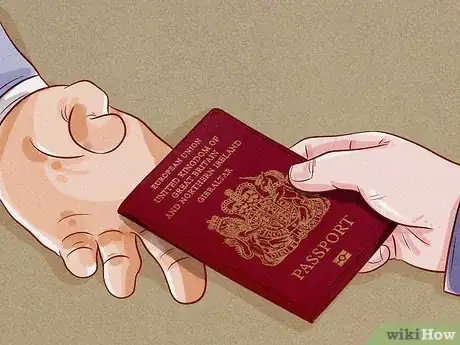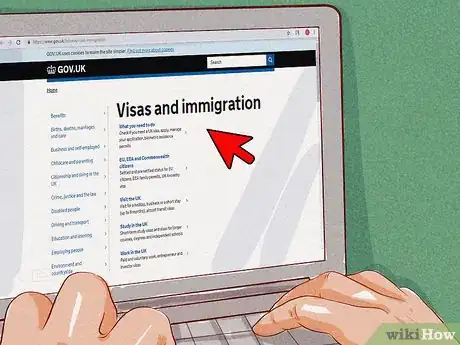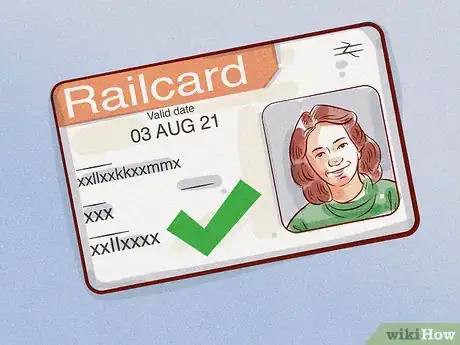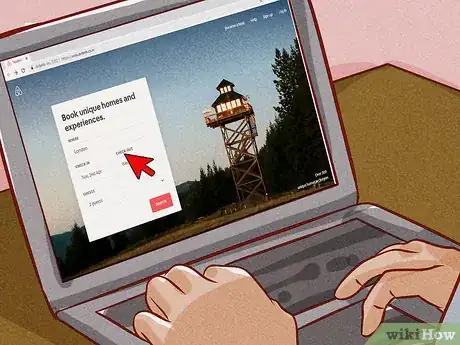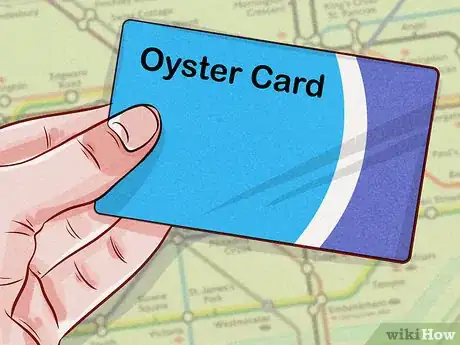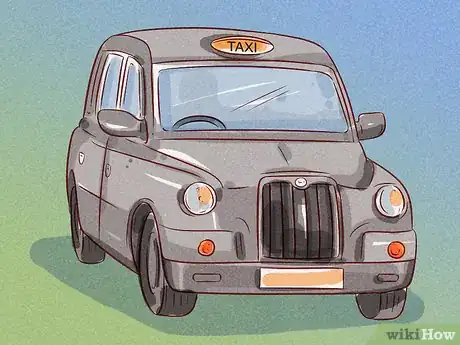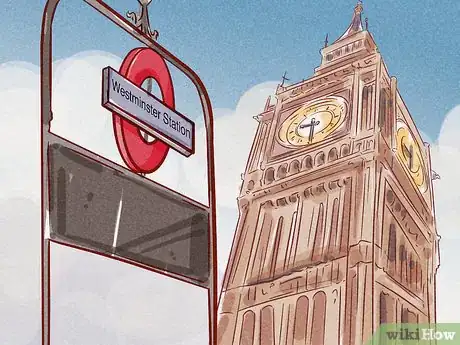This article was co-authored by Stef Katz. Stef Katz is a Travel Agent and the Founder of The Travel Superhero. She has helped clients enjoy convenience, access, personal attention, and ease in their travel planning for 6 years. Stef specializes in elevated social travel and finds ways to bring peace of mind to her travelers with open communication, genuine care, and professional support. She holds an Associate's Degree in Liberal Arts from Miami Dade College and a Bachelor's Degree in Marketing from the University of Florida, as well as numerous certifications with destinations, tour companies, and cruise lines in the travel industry.
There are 26 references cited in this article, which can be found at the bottom of the page.
This article has been viewed 14,575 times.
London is one of the world’s great cities, a sprawling urban achievement rich in fascinating history, pageantry, and unique sightseeing opportunities. If you’re planning a trip to the UK capital, you’ll first need to make sure that you have all of your necessary travel documents in order, including your passport and Visa. You can then go about making arrangements for travel, lodging, and activities that suit your interests and budget. While you’re there, be sure to check out a few of the city’s many world-famous landmarks, such as Buckingham Palace, Westminster Abbey, Big Ben, and the notorious Tower of London.
Steps
Getting to London
-
1Obtain a passport if you don’t have one already. Visit the local office of the agency that oversees travel laws in your home country and request a passport application form. You’ll be asked to provide your personal information, along with supporting documents including proof of citizenship, valid personal ID, and a clear photo of yourself. Once these documents have been approved, you’ll receive your passport by mail within 4-6 weeks.[1]
- There may also be a fee associated with processing your passport materials. Processing fees can vary from place to place, so be sure to inquire with the issuing agency when you go in to apply.
- If you already have a passport and you just need to renew it, see if it’s possible to submit your renewal forms by mail. That way, you can save yourself a trip.[2]
-
2Apply for a Visa if you need one to enter the UK from your home country. In some cases, it’s necessary to have a travel Visa in order to visit London and other cities in the UK. You can find out whether you’re required to have a Visa by looking over the UK government’s Visas and Immigration website or asking at the British embassy in your area. If you discover that you need a Visa, you can apply for one on the same site.[3]
- Depending on where you’re from, you may not need a Visa to travel to London. For example, Swiss nationals and citizens of EEA (European Economic Area) countries can come and go throughout the UK as they please.[4]
- Travel laws change constantly, so make sure you’re getting your Visa-related information from an up-to-date source.
Tip: If your Visa application is approved, you’ll be able to roam about freely in the UK for up to 6 months.[5]
Advertisement -
3Fly into London from anywhere in the world. This will most likely be the easiest option if you’re coming from somewhere outside of Europe. You’ll take off from a major international airport near you and land in one of London’s 5 main airports (London City, Gatwick, Heathrow, Luton, or Stansted), with possible connections in-between.[6]
- Flights to London tend to fill up quickly, so book your tickets as far in advance as possible.
-
4Take a train into London from one of several surrounding cities. If you’re already in England or another part of the UK, you also have the option of getting to London by rail. Go online to buy a Railcard, plot your points of departure and arrival, and reserve a seat. Train travel is slower than flying if you’re covering a lot of distance, but it will be much cheaper and more accessible for most people.[7]
- A standard one-year Railcard costs an average of £20-30. Your Railcard purchase entitles you to unlimited number of trips. If you’re a senior citizen, disabled person, or traveler between the ages of 16-25, you may also be eligible for additional discounts.[8]
- While not a necessity, a Railcard has the potential to save you quite a bit of money, especially if you’ll be moving around a lot during your time in the UK.
-
5Charter a ferry into London if you prefer to travel by water. It’s also possible to reach London from other parts of the UK and continental Europe by taking a ferry. Ferries carry passengers from as far away as Ireland, France, Spain, Denmark, and the Netherlands to one of the 3 central seaports near London: Dover, Harwich, and Newhaven. From there, it’s just a short drive or train ride to London proper.[9]
- DFDS Seaways, P&O, and Brittany Ferries are a few of the more well-known services that run day-and-night trips to London-adjacent seaports from nearby areas.
- A ferry ride can be a unique and interesting way to make your way into the UK capital if you’re not in any particular hurry.
Arranging Accommodations and Transportation
-
1Book a hotel or inn at least 4-6 months ahead of time. London is an extremely popular tourist destination year-round, which means there’s no real off-season. For this reason, it’s a good idea to secure lodging well before you depart your current location. Fortunately, there are hotels, inns, all over London’s various districts, so you’re almost guaranteed to find something.[10]
- Take some time to read a little bit about the different parts of London and reserve a room somewhere that suits your tastes, budget, and expectations for you trip.
- Look for a place with easy access to the London Underground subway system if you think you’ll be shuttling back and forth frequently during your stay.[11]
-
2Rent an Airbnb to save money and experience authentic London living. Get on the Airbnb website to browse listings around the greater London area. An Airbnb may not be as conveniently-located as a cushy hotel or bed-and-breakfast, but it can be a more affordable option if you’re traveling with a small group or only plan on being in the city for a short time.[12]
- Even with elevated metropolitan pricing, most Airbnbs will still be offering a lower nightly rate than an ordinary hotel chain.[13]
- Another advantage of staying at an Airbnb is that it gives you the opportunity to see how the locals live for a few days. You’ll have your choice of a house, flat, or single-person room, or even something more quaint, such as a cottage.
-
3Use the Tube to connect to various destinations around the city. The London Underground, known to locals as “the Tube,” runs to each of the city’s major districts, as well as outlying counties like Buckinghamshire, Essex, and Hertfordshire. To pay your way, either use an ordinary credit or debit card to buy a one-time pass at any entrance or purchase a prepaid Oyster card. Oyster cards are good for a certain number of rides and allow you to bypass the crowded ticket lines.[14]
- Pick up a paper map on your way in or refer to one of the many oversized maps posted at the station or inside the train cars themselves to determine where you’re going and when you need to get off.[15]
- Keep in mind that different lines have different hours of operation. Always check the schedule of the line you’ll be riding before you set out to avoid missing an appointment or getting stranded.
-
4Hop on a bus to travel shorter distances within London. Buses are the most used form of transportation within the city of London, thanks to their convenience and affordability. Most of the time, it will be easier to just wait for a bus than to track down a Tube entrance if you’re only going a few miles. You’ll find bus routes posted online on Transport for London’s website, as well as on the buses’ scrolling display screens.[16]
- If you already have an Oyster card, you can take a bus anywhere you want to go within the city limits for a fixed rate of £1.50.[17]
- Many London bus routes operate 24 hours a day, which means that unlike with the Tube, there’s no chance of being left behind due to poor planning or timing.
Warning: Be aware that it’s not possible to pay for bus fare in London using cash. You’ll need to have your Oyster card, Travelcard, or a contactless credit or debit card ready in order to ride.
-
5Hail an iconic black cab to receive a memorable tour of the city in style. London’s hackney carriage taxi services may not be the cheapest way to get around, but they’re without a doubt one of the most fun. Just flag down any cab with its light on and tell the driver where you’re going—they’ll take care of the rest. If you’re lucky, they might also entertain you with humorous and informative stories about the city and its geography and colorful past.[18]
- London cab drivers only accept payment in the form of cash or credit or debit card. This means Oyster cards are a no-go, unfortunately.
- It’s customary for black cab passengers to tip their drivers by rounding up to the nearest pound. You’re free to leave more if you thoroughly enjoyed the ride.
Enjoying Sightseeing and Other Activities
-
1Take the Tube into Westminster Station to see Big Ben. “Big Ben” is the nickname for the massive clock tower on the north side of the Palace of Westminster, where the Houses of Parliament meet. It’s considered by many to be one of the premier landmarks of the modern world. The imposing structure is the first thing you’ll see when you get off at Westminster Station.[19]
- Don’t forget to bring your camera! It’s customary for first-time visitors to snap a photo of Big Ben upon arriving at Westminster.[20]
Tip: Consider picking up a London Pass to see more of the city for less. One of these packages includes access to must-see spots within London, plus discounts on bus fare, line-cutting privileges, and other extras.[21]
-
2Get a glimpse of royal life at Buckingham Palace. From Westminster Abbey, you can make your way to Buckingham Palace, where the Royal Family of England resides. It’s also possible to tour many of the State Rooms at Buckingham Palace, including the Throne Room, the Queen’s choir room, and the White Drawing Room.[22]
- The Abbey opens to visitors at 9:30am Monday through Saturday. Make sure you get there early to grab a spot in line.
- If you happen to be exploring Buckingham Palace at around 10:45am, you may even be treated to a glimpse of the elaborate Changing of the Guard ceremony.[23]
-
3Take in a show at the Globe Theater. The Globe is the legendary theater house where William Shakespeare’s plays were originally performed. Showings of these and other celebrated productions are still put on there today. They’re not to be missed if you’re an aficionado of the performing arts.[24]
- Right next door to the Globe Theater is the Tate Modern art gallery, where you can feast your eyes on original works by artists like Pablo Picasso, Salvador Dalí, Henri Matisse, and Andy Warhol.[25]
- Paying a visit to the Globe Theater or Tate Modern will also afford you the chance to cross the Millennium Bridge that spans the Thames River and look out over the busy waterways there.
-
4Do some shopping in one of London’s world-renowned retail districts. If you’ve got some money to spend, there’s no better place to do it than one of the many shops at Oxford Street, Knightsbridge, Bond Street, Covent Garden or King's Road. There, you’ll find everything from designer fashion and luxury goods to hip local boutiques and cafes. Treat yourself to a whole new wardrobe for your trip, or just pick up some souvenirs for your loved ones back home.[26]
- If you find yourself getting hungry while you’re in the area and need to recharge, ask a few of the locals for recommendations for places to eat and drink.
-
5Rest and enjoy the sights at Trafalgar Square. The cultural crossroads known as Trafalgar Square is recognized as the official center of London. It’s a bustling place with a wealth of museums, exhibits, and historical buildings and monuments to explore. You’ll also find many interesting people, including celebrities, artists, and street performers, gathered the Square at any given time.[27]
- Make it a point to pass by each of the magnificent bronze statues in the four corners of Trafalgar Square, and have a seat by the large fountain in the middle if you’re feeling tired.
-
6Walk the grounds of the Tower of London. No trip to London is complete without a visit to the infamous Tower of London, which sits on the eastern part of the city in the London Borough of Tower Hamlets. After paying admission, you’ll have the option of receiving a guided tour of the ominous Tower and its battlements with one of the knowledgeable “Beefeaters” on duty. The walls of the Tower also hold the Crown Jewels, which represent the past glory of the British monarchy.[28]
- As of 2019, admission for the Tower of London costs £22.70 and £10.75 for children. You may be able to save on much or all of this fee using your London Pass.[29]
- Keep an eye out for the seven black ravens that inhabit the courtyard of the Tower of London. These curious birds are kept as an omen of protection for the Tower and Crown.
- If you want to plan a trip to London, consider the things for which you want to visit it. It could be history, shopping, food, art, or all of them.
- Determine how you would like to experience London. For example, would you like it to be a guided tour or a river cruise.
- Decide on your budget and call your travel agent to arrange a trip for you.
Community Q&A
-
QuestionIs London hot all the time?
 GB742Top AnswererLondon is generally slightly hotter than other less urban areas of the UK, but is not often 'hot'. Daily mean temperatures vary from 5.6°c to 19°c throughout the year, but can reach extremes of as low as -16.1°c and as high as 40.2°c. Humidity is often high, and it rains relatively regularly. It should also be noted that many building (and most public transport) are built to keep heat in and don't have air conditioning, so you might feel the heat more in London than other places.
GB742Top AnswererLondon is generally slightly hotter than other less urban areas of the UK, but is not often 'hot'. Daily mean temperatures vary from 5.6°c to 19°c throughout the year, but can reach extremes of as low as -16.1°c and as high as 40.2°c. Humidity is often high, and it rains relatively regularly. It should also be noted that many building (and most public transport) are built to keep heat in and don't have air conditioning, so you might feel the heat more in London than other places.
References
- ↑ https://www.thestreet.com/how-to/get-a-passport-14750544
- ↑ https://travel.state.gov/content/travel/en/passports/apply-renew-passport/renew-by-mail.html
- ↑ https://www.gov.uk/government/organisations/uk-visas-and-immigration
- ↑ https://www.visitlondon.com/traveller-information/travel-to-london/customs-and-visas/uk-visas
- ↑ https://www.gov.uk/standard-visitor-visa
- ↑ https://www.visitlondon.com/traveller-information/travel-to-london/airport
- ↑ https://www.theglobetrottingteacher.com/ultimate-cheat-sheet-first-trip-to-london/
- ↑ https://www.railcard.co.uk/about-railcards/
- ↑ https://www.visitlondon.com/traveller-information/travel-to-london/ferry
- ↑ https://santorinidave.com/best-hotels-london
- ↑ https://www.theglobetrottingteacher.com/ultimate-cheat-sheet-first-trip-to-london/
- ↑ https://trip101.com/article/top-10-airbnb-accommodations-in-london
- ↑ https://www.busbud.com/blog/airbnb-vs-hotel-rates/
- ↑ https://bucketlistjourney.net/12-tips-for-navigating-the-london-underground/
- ↑ https://www.cnn.com/travel/article/london-tube-tips/index.html
- ↑ https://www.findingtheuniverse.com/guide-public-transport-london/#5-Bus
- ↑ https://www.londontoolkit.com/briefing/buses.htm
- ↑ https://www.visitlondon.com/traveller-information/getting-around-london/taxis
- ↑ https://www.britannica.com/topic/Big-Ben-clock-London
- ↑ https://www.bbc.com/news/uk-40929709
- ↑ https://www.londonpass.com/how-it-works/
- ↑ https://www.rct.uk/visit/the-state-rooms-buckingham-palace/highlights-of-buckingham-palace#/
- ↑ https://www.visitlondon.com/things-to-do/event/8725947-changing-the-guard
- ↑ https://www.theglobetrottingteacher.com/ultimate-cheat-sheet-first-trip-to-london/
- ↑ https://theculturetrip.com/europe/united-kingdom/england/london/articles/10-unmissable-works-at-the-tate-modern/
- ↑ https://blog.ihg.com/8-places-london-shopping
- ↑ https://www.theglobetrottingteacher.com/ultimate-cheat-sheet-first-trip-to-london/
- ↑ https://www.telegraph.co.uk/travel/destinations/europe/united-kingdom/england/london/articles/tower-of-london-visitor-guide-prices-tickets-advice/
- ↑ https://www.hrp.org.uk/tower-of-london/visit/tickets-and-prices/
